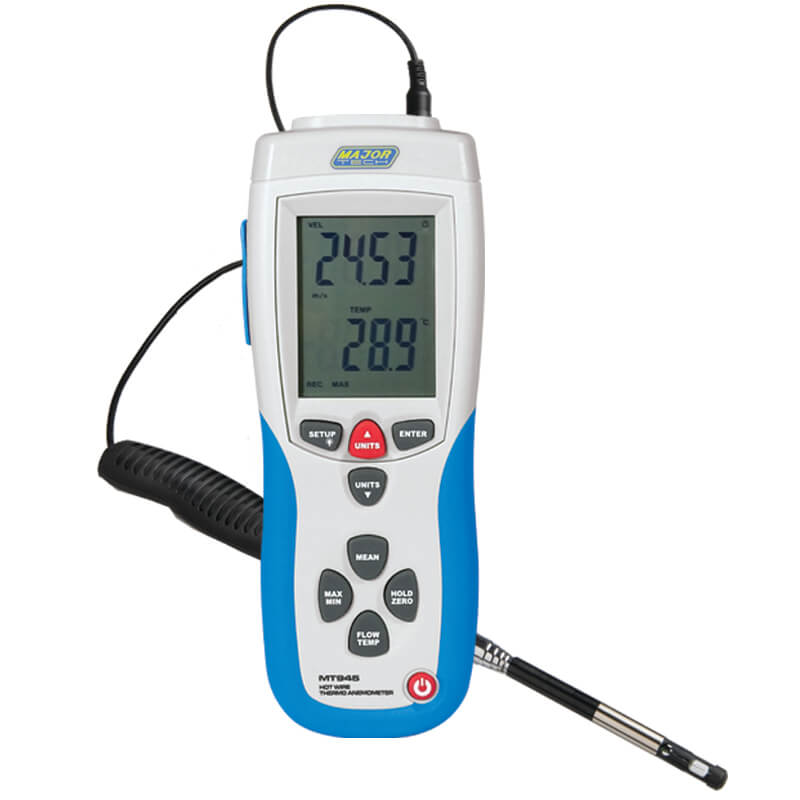Recognizing Various Sorts Of Anemometers for Numerous Applications
Recognizing Various Sorts Of Anemometers for Numerous Applications
Blog Article
Discovering the Features and Benefits of Anemometers for Weather Lovers and Specialists
From mug anemometers to sonic anemometers, each type brings its distinct collection of applications and benefits, dropping light on different elements of atmospheric problems. As we dive right into the functions and advantages of anemometers, a deeper understanding emerges not just of prevailing weather phenomena however additionally of the wider ramifications for sectors like wind power manufacturing and environmental study.
Relevance of Anemometers in Weather Condition Monitoring
Anemometers play a vital role in climate tracking by offering exact measurements of wind rate, helping in projecting and understanding weather patterns. These instruments, ranging from traditional mug anemometers to contemporary ultrasonic anemometers, are crucial for meteorologists, scientists, and weather fanatics alike. By measuring wind rate, anemometers help in determining the strength of weather phenomena such as storms, twisters, and storms. In addition, they supply important data for aviation, maritime procedures, and different industries that are sensitive to wind conditions.

Sorts Of Anemometers and Their Applications
The most typical kinds of anemometers consist of cup anemometers, vane anemometers, hot-wire anemometers, and ultrasonic anemometers. Mug anemometers are composed of three or four mugs placed on horizontal arms that rotate with the wind, gauging its speed. Vane anemometers, on the other hand, make use of an easily rotating vane to straighten with the wind instructions, supplying both wind speed and direction measurements.
Each kind of anemometer has its special benefits and applications. Mug anemometers are durable and appropriate for general weather condition monitoring, while vane anemometers are favored for directional measurements. Hot-wire anemometers are delicate to low air rates, making them perfect for indoor settings. Ultrasonic anemometers are non-intrusive and use high accuracy, usually used in study and specialized climate surveillance applications. Understanding the qualities and applications of each kind of anemometer is essential for choosing the most suitable instrument for particular weather condition keeping track of needs.
Benefits of Making Use Of Anemometers in Forecasting
In weather forecasting, the application of anemometers uses important benefits for boosting the accuracy of weather forecasting. Anemometers gauge wind speed and direction, providing vital data for forecasting weather patterns. By integrating wind data right into forecasting versions, meteorologists can better understand the activity of climate systems, prepare for modifications in weather, and concern extra exact forecasts.
Furthermore, anemometers play an important role in analyzing prospective weather condition risks. Keeping an eye on wind speeds aids forecasters forecast severe climate occasions such as typhoons, tornadoes, and winter tornados with better precision. This early caution system makes it possible for authorities to release prompt informs and carry out needed precaution, lowering the dangers to life and home.
In addition, anemometers aid in maximizing renewable resource production. By examining wind patterns, meteorologists can recognize appropriate locations for wind farms and predict power output, contributing to the effective generation of wind power.

Anemometers in Wind Energy Production
Given the vital function anemometers play in offering exact wind information for climate forecasting and risk assessment, their relevance prolongs to the realm of wind power manufacturing. Anemometers are crucial instruments in the field of wind energy, where the measurement of wind rate and direction is essential for establishing the usefulness and performance of wind turbine installments. By precisely determining wind speeds at varying heights, anemometers assist enhance the placement and design of wind turbines to make best use of look at this web-site power output.
In wind farms, anemometers are strategically positioned to collect real-time wind data that is used to evaluate the prospective energy production of a site. This information contributes in determining the review economic practicality of wind energy jobs and in projecting energy generation to make sure grid stability. Furthermore, anemometers aid in checking wind problems to optimize turbine performance, avoid damage from high winds, and make certain the security of personnel operating in the vicinity of wind turbines.
Enhancing Weather Recognizing With Anemometers

Anemometers play a vital duty in enhancing our understanding of microclimates. These localized weather conditions can vary substantially from wider local projections, making it important to have accurate data for particular areas. anemometer. By tactically putting anemometers in various locations, researchers can gather thorough details on just how wind acts in various terrains, metropolitan atmospheres, or bodies of water
Furthermore, anemometers add to enhancing weather forecasting versions by supplying real-time information on wind habits. This info is especially important for predicting severe weather condition occasions, enhancing agricultural practices, and supporting industries like aviation and maritime navigating. On the see it here whole, anemometers are invaluable instruments that enable us to delve deeper right into the intricacies of climate systems, ultimately leading to even more better-informed decisions and exact forecasts.
Verdict
In conclusion, anemometers play an essential function in weather monitoring and projecting by measuring wind rate and direction. Anemometers also have applications in wind power production, further highlighting their relevance in both meteorology and sustainable energy markets.
From mug anemometers to sonic anemometers, each type brings its distinct set of applications and benefits, losing light on numerous aspects of atmospheric conditions. These instruments, ranging from standard mug anemometers to modern-day ultrasonic anemometers, are vital for meteorologists, scientists, and weather condition fanatics alike. The most common types of anemometers include cup anemometers, vane anemometers, hot-wire anemometers, and ultrasonic anemometers. Cup anemometers are appropriate and durable for basic weather condition tracking, while vane anemometers are preferred for directional dimensions. Anemometers are crucial tools in the field of wind energy, where the dimension of wind rate and direction is vital for determining the feasibility and efficiency of wind turbine setups.
Report this page